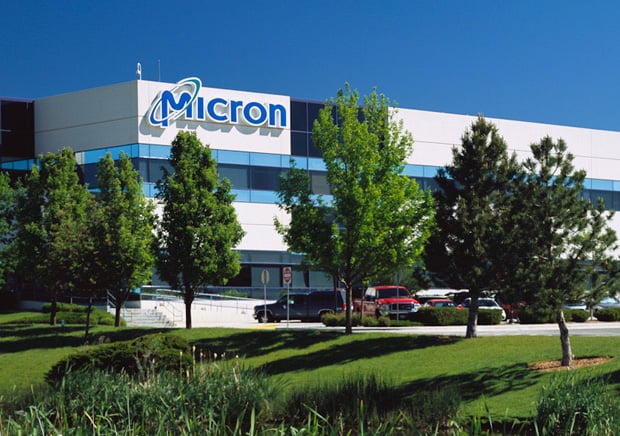Micron Starts Shipping 8Gb GDDR5 Memory For Next Generation Graphics Cards
With all the hype surrounding AMD's use of High Bandwidth Memory (HBM) for its Fury line of graphics card, you would be excused for thinking GDDR5 memory had died and become a footnote. You'd also be wrong. There's still more bandwidth to be squeezed out of GDDR5 memory, and that's what Micron has done.
The Boise, Idaho-based memory maker announced today that the 8Gb (gigabit, not gigabyte) GDDR5 memory it was previously sampling to customers is now widely available. Compared to the current crop of 4Gb GDDR5 memory, the newly available 8Gb chips push the bandwidth ceiling from 7Gbps up to 8Gbps. The advancement also makes it possible to increase the frame buffer on graphics cards without jacking up the price.

That latter bit should appeal to gamers, especially ones interested in 4K resolution gaming. Whereas larger frame buffers were of questionable value during the era of Full HD 1080p gaming, the 4K movement has produced a need for more dedicated graphics memory -- the frame buffer is becoming critically important.
What about HBM? According to Micron, stacking DRAM "isn't always the easiest solution in terms of design and manufacturing." By focusing on GDDR5 advancements, Micron says it's able to offer its partners and customers "flexibility in their system design while still enabling an increase in bandwidth."
Speaking of increased bandwidth, Micron plans to announce a new memory solution next year that will push the boundaries to 10-14Gbps, which is up to twice as fast as today's mainstream GDDR5 memory speeds.
Called GDDR5X, the new memory standard takes a page from regular DDR and its evolution over the years by doubling the prefetch from 8n to 16n. GDDR5X also benefits from an ultra-high speed operating mode that, looking long term, could push bandwidth up to 16Gbps.
This is essentially an extension to the existing SGRAM standard, and by going that route, the GDDR5X memory controller will use the same interface signal pin count as GDDR5 and come in the same form factor. In other words, the transition should be painless and inexpensive.
The Boise, Idaho-based memory maker announced today that the 8Gb (gigabit, not gigabyte) GDDR5 memory it was previously sampling to customers is now widely available. Compared to the current crop of 4Gb GDDR5 memory, the newly available 8Gb chips push the bandwidth ceiling from 7Gbps up to 8Gbps. The advancement also makes it possible to increase the frame buffer on graphics cards without jacking up the price.

That latter bit should appeal to gamers, especially ones interested in 4K resolution gaming. Whereas larger frame buffers were of questionable value during the era of Full HD 1080p gaming, the 4K movement has produced a need for more dedicated graphics memory -- the frame buffer is becoming critically important.
What about HBM? According to Micron, stacking DRAM "isn't always the easiest solution in terms of design and manufacturing." By focusing on GDDR5 advancements, Micron says it's able to offer its partners and customers "flexibility in their system design while still enabling an increase in bandwidth."
Speaking of increased bandwidth, Micron plans to announce a new memory solution next year that will push the boundaries to 10-14Gbps, which is up to twice as fast as today's mainstream GDDR5 memory speeds.
Called GDDR5X, the new memory standard takes a page from regular DDR and its evolution over the years by doubling the prefetch from 8n to 16n. GDDR5X also benefits from an ultra-high speed operating mode that, looking long term, could push bandwidth up to 16Gbps.
This is essentially an extension to the existing SGRAM standard, and by going that route, the GDDR5X memory controller will use the same interface signal pin count as GDDR5 and come in the same form factor. In other words, the transition should be painless and inexpensive.


